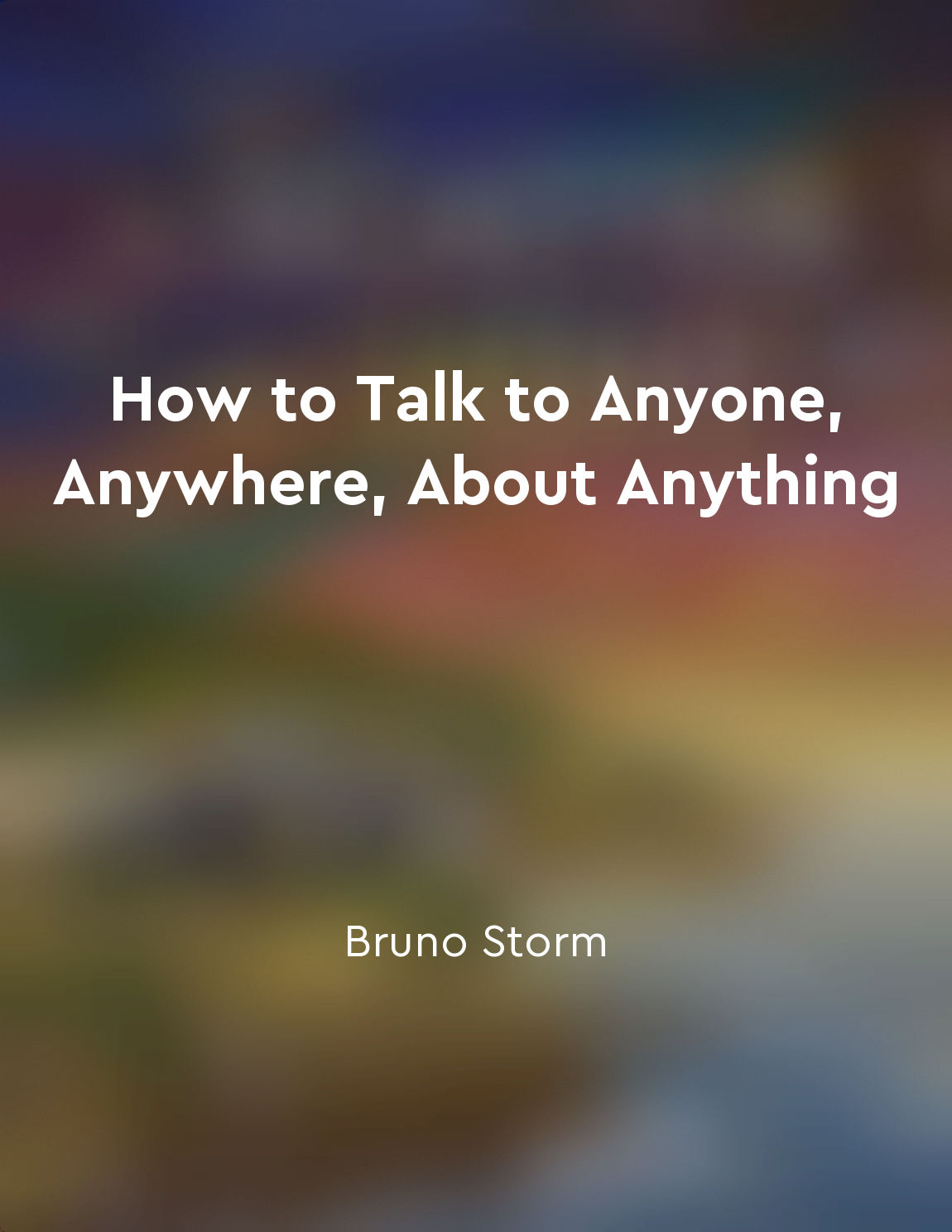Audio available in app
Use small talk to break the ice from "summary" of How to Talk to Anyone by Leil Lowndes
Begin by understanding that the phrase 'small talk' may seem insignificant, but it is actually a powerful tool for initiating conversations. The purpose of small talk is to break the ice, establish rapport, and create a comfortable atmosphere for further communication. It is the key to unlocking meaningful connections with others. Small talk serves as a social lubricant that eases the tension in initial interactions. It is like a warm-up exercise before diving into deeper conversations. By engaging in light, casual topics such as the weather, current events, or common interests, you can pave the way for more substantial discussions later on. When engaging in small talk, remember to keep the focus on the other person. Show genuine interest in their thoughts, opinions, and experiences. Ask open-ended questions that encourage them to share more about themselves. This will not only make them feel valued but also help you learn more about them. Another important aspect of small talk is to be a good listener. Pay attention to what the other person is saying and respond accordingly. Show empathy, nod in agreement, and provide encouraging feedback. This will demonstrate your attentiveness and create a positive impression. Furthermore, use nonverbal cues to enhance your small talk. Maintain eye contact, smile, and use gestures to convey warmth and friendliness. Your body language can speak volumes and help establish a connection with the other person.- Small talk may seem trivial, but it is a crucial skill for building relationships and connecting with others. By mastering the art of small talk, you can break the ice, create a comfortable atmosphere, and pave the way for meaningful conversations. So don't underestimate the power of small talk – embrace it as a valuable tool in your communication repertoire.
Similar Posts

Encourage a culture of honest and open communication
Creating an environment where honesty and open communication are encouraged is crucial for building trust and fostering healthy...
Allow others to express themselves freely
When you engage in conversation with someone, it is important to create an environment where they feel comfortable sharing thei...
Remember people's names to make them feel important
The simple act of remembering someone's name can have a powerful impact on how they feel about themselves and their relationshi...

Be a good listener and encourage others to talk about themselves
One of the most powerful ways to make a positive impression on others is to show a genuine interest in them. People love to tal...
Use positive language
When you talk to people at work, always use positive language. This means avoiding negative words and phrases that can bring do...
Being mindful of body language enhances understanding
When we engage in conversation, we rely not only on the words spoken but also on the non-verbal cues communicated through body ...

Be confident in your communication skills
Confidence in your communication skills is absolutely crucial when it comes to engaging with others in conversations. This is b...
Be reliable and trustworthy
To be reliable and trustworthy means you have to show up when you say you will. Be the kind of person who others can count on t...
Be mindful of your tone and body language during conversations
Imagine you’re talking to someone, and they suddenly start speaking in a harsh tone and crossing their arms. How would you feel...
Be curious and ask followup questions to show interest
Curiosity is your best friend in conversations. It shows that you are interested in the other person and want to learn more abo...

